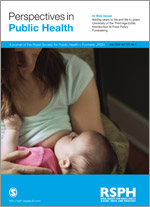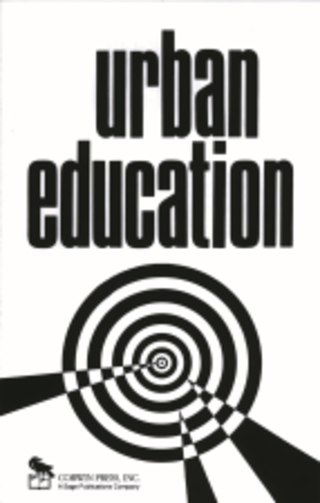College and university rankings order institutions in higher education based on factors that vary depending on the ranking. Some rankings evaluate institutions within a single country, while others assess institutions worldwide. Rankings are typically conducted by magazines, newspapers, websites, governments, or academics. In addition to ranking entire institutions, specific programs, departments, and schools can be ranked. Some rankings consider measures of wealth, excellence in research, selective admissions, and alumni success. Rankings may also consider various combinations of measures of specialization expertise, student options, award numbers, internationalization, graduate employment, industrial linkage, historical reputation and other criteria.
The impact factor (IF) or journal impact factor (JIF) of an academic journal is a scientometric index calculated by Clarivate that reflects the yearly mean number of citations of articles published in the last two years in a given journal, as indexed by Clarivate's Web of Science.
Scientometrics is the field of study which concerns itself with measuring and analysing scholarly literature. Scientometrics is a sub-field of informetrics. Major research issues include the measurement of the impact of research papers and academic journals, the understanding of scientific citations, and the use of such measurements in policy and management contexts. In practice there is a significant overlap between scientometrics and other scientific fields such as information systems, information science, science of science policy, sociology of science, and metascience. Critics have argued that over-reliance on scientometrics has created a system of perverse incentives, producing a publish or perish environment that leads to low-quality research.
The Arts and Humanities Citation Index (AHCI), also known as Arts and Humanities Search, is a citation index, with abstracting and indexing for more than 1,700 arts and humanities academic journals, and coverage of disciplines that includes social and natural science journals. Part of this database is derived from Current Contents records. Furthermore, the print counterpart is Current Contents.
Urban studies is based on the study of the urban development of cities. This includes studying the history of city development from an architectural point of view, to the impact of urban design on community development efforts. The core theoretical and methodological concerns of the urban studies field come from the social science disciplines of history, economics, sociology, geography, political science, anthropology, and the professional fields of urban planning, architecture, landscape architecture, and urban design. Urban studies helps with the understanding of human values, development, and the interactions they have with their physical environment.

Contemporary Sociology is a bi-monthly peer-reviewed academic journal of sociology published by SAGE Publications in association with the American Sociological Association since 1972. Each issue of the journal publishes many in-depth as well as brief reviews of recent publications in sociology and related disciplines, as well as a list of publications received that have not been reviewed. In 2010 the journal published just under 400 book reviews. In addition, the journal also publishes a small number of review essays and discursive articles in each issue. The editor-in-chief is Yasemin Besen–Cassino.
The International Institute for Environment and Development (IIED) is an independent policy research institute whose stated mission is to "build a fairer, more sustainable world, using evidence, action and influence in partnership with others." Its director is Dr Tom Mitchell.

The Journal of Contemporary History is a quarterly peer-reviewed academic journal covering the study of history in all parts of the world since 1930. It was established in 1966 by Walter Laqueur and George L. Mosse. Originally published by Weidenfeld & Nicolson it was purchased by SAGE Publications in 1972. The editors-in-chief are Richard J. Evans and Mary C. Neuburger.

Cultural globalisation refers to the transmission of ideas, meanings and values around the world in such a way as to extend and intensify social relations. This process is marked by the common consumption of cultures that have been diffused by the Internet, popular culture media, and international travel. This has added to processes of commodity exchange and colonization which have a longer history of carrying cultural meaning around the globe. The circulation of cultures enables individuals to partake in extended social relations that cross national and regional borders. The creation and expansion of such social relations is not merely observed on a material level. Cultural globalization involves the formation of shared norms and knowledge with which people associate their individual and collective cultural identities. It brings increasing interconnectedness among different populations and cultures. The idea of cultural globalization emerged in the late 1980s, but was diffused widely by Western academics throughout the 1990s and early 2000s. For some researchers, the idea of cultural globalization is reaction to the claims made by critics of cultural imperialism in the 1970s and 1980s.

European Urban and Regional Studies is a quarterly peer-reviewed academic journal that covers the field of urban studies with an emphasis on Europe. It was established in 1994 and is published by SAGE Publications.

Perspectives in Public Health(PPH) is a bi-monthly, peer-reviewed, academic journal that publishes papers in the field of public health. It is practice orientated and is published on behalf of the Royal Society for Public Health by SAGE Publications.

The Journal of Contemporary Ethnography is a peer-reviewed academic journal that covers research in ethnography. The journal's editors-in-chief are Charles Edgley and Jeffrey E. Nash. It was established in 1972 and is currently published by SAGE Publications.

Journal of Family Issues is a peer-reviewed academic journal that publishes papers in the field of family studies. The journal's editor-in-chief is Constance L. Shehan. It was established in 1980 and is currently published by SAGE Publications.

French Cultural Studies is a peer-reviewed academic journal that publishes papers in the field of Cultural Studies. The journal's editor is Nicholas Hewitt. It has been in publication since 1990 and is currently published by SAGE Publications.

Psychology of Women Quarterly is a quarterly peer-reviewed academic journal that covers the fields of psychology and women's studies, focusing on the psychological health of women. The journal's editor is Dawn M. Szymanski, PhD. It was established in 1976 and is published by SAGE Publications on behalf of the Society for the Psychology of Women, a division of the American Psychological Association.
Sociology of Education is a peer-reviewed academic journal that publishes papers in the fields of Sociology and Education. The journal's editor is Linda Renzulli. It has been in publication since 1963 and is currently published by SAGE Publications in association with American Sociological Association.

The Journal of Urban History is a bimonthly peer-reviewed academic journal covering the field of urban studies. The current editor-in-chief is David Goldfield, who is Robert Lee Bailey Professor of History at the University of North Carolina at Charlotte. The journal was established in 1974 and is published by SAGE Publications in association with the Urban History Association.

Urban Education is a bimonthly peer-reviewed academic journal that covers the field of urban education. The journal's editor-in-chief is H. Richard Milner. It was established in 1965 and is published by SAGE Publications.
Urbanization in India began to accelerate after independence, due to the country's adoption of a mixed economy, which gave rise to the development of the private sector. The population residing in urban areas in India, according to the 1901 census, was 11.4%, increasing to 28.53% by the 2001 census, and is now currently 34% in 2017 according to The World Bank. According to a survey by UN, in 2030 40.76% of country's population is expected to reside in urban areas. As per World Bank, India, along with China, Indonesia, Nigeria, and the United States, will lead the world's urban population surge by 2050.

Planning Perspectives is a bi-monthly peer-reviewed academic journal of history, planning, and the environment. It is affiliated with the International Planning History Society and is published by Routledge. In 2022 the editors-in-chief are John R. Gold and Margaret Gold. The editor for the Americas is Stephen J. Ramos. The IPHS editor is Carola Hein












